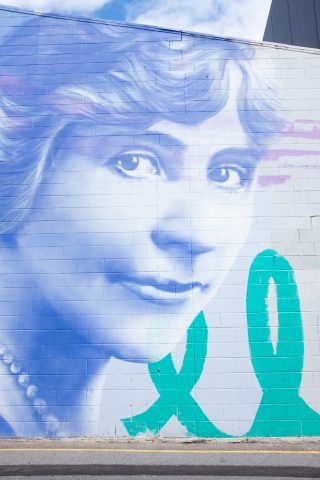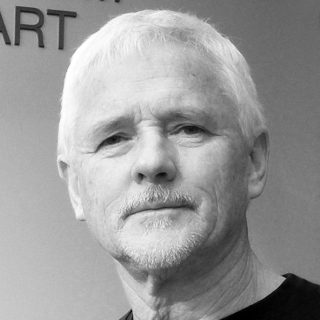
John Neylon
John Neylon is an award-winning art critic and the author of several books on South Australian artists including Hans Heysen: Into The Light (2004), Aldo Iacobelli: I love painting (2006), and Robert Hannaford: Natural Eye (2007).
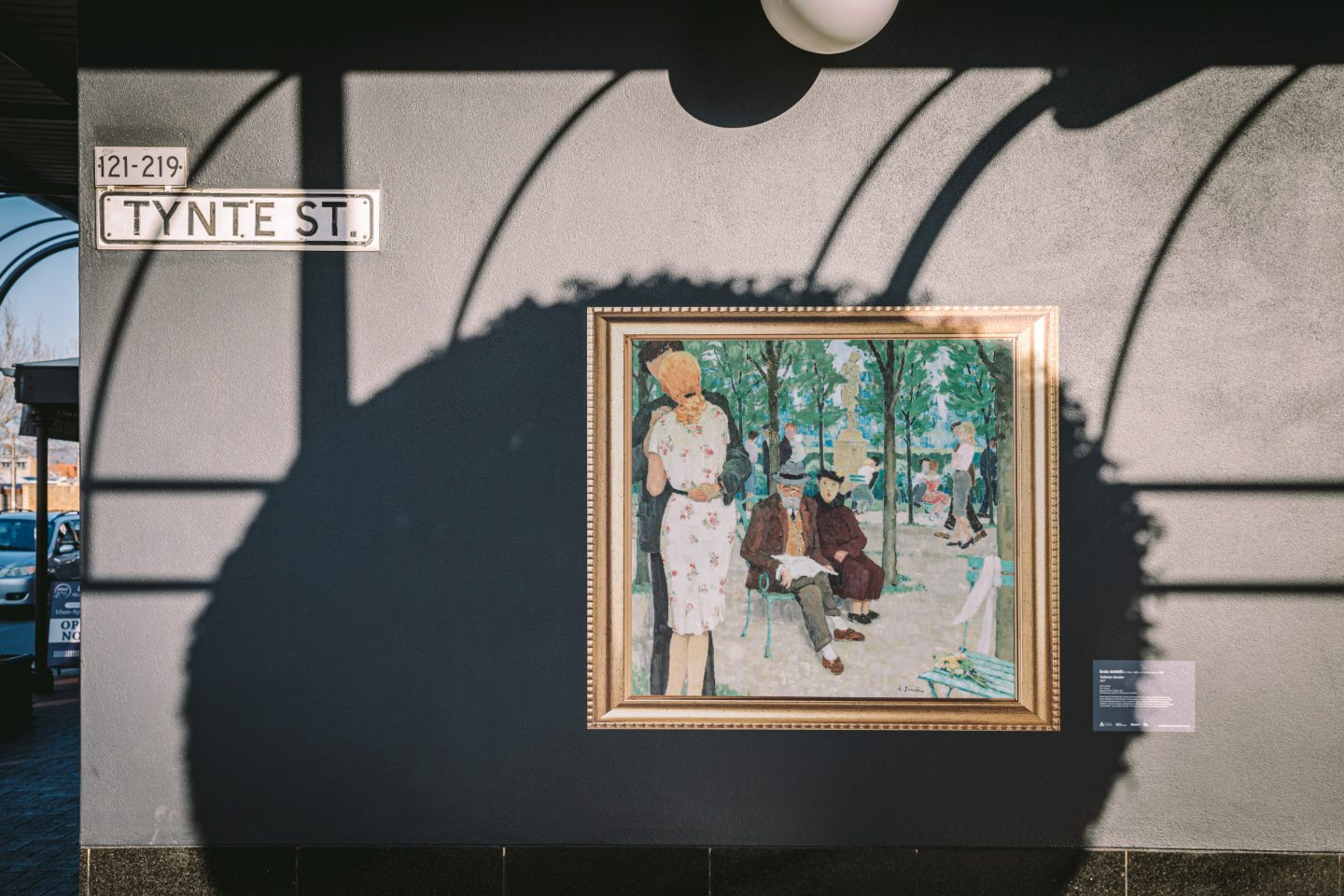
The City of Adelaide’s Musée Extérieur project, which has now been extended into December, brings works from the Thomas Henry Museum in Cherbourg-en-Cotentin to walls around North Adelaide.
Sister city links have been operating in and around Adelaide since the early 1970s. They have provided opportunities for exchanges of culture, education, business and trade. The Qingdao (Shandong, China) relationship has been particularly active. Examples include a number of visual arts projects in the 2014 OzAsia Festival, and Fire Monkey Studio: A South Australia & Shandong Preview Exhibition (Kerry Packer Civic Gallery 2016).
SALA’s active engagement following the state government–led trade, economic and cultural delegation to Shandong in 2015 has resulted in an ongoing relationship with artists in Shandong Province, China.
The success of this cultural bonding will hopefully give heart and incentive to Adelaide’s current rekindling of Gallic flames, prompted by industrial and defence ties between Adelaide and Cherbourg, France. The Australian future submarine project, which involves a design phase in both countries and build at Osborne, underlies the sister city relationship between Cherbourg-en-Cotentin and the City of Port Adelaide Enfield. A recent cultural by-product (managed by the City of Adelaide) is the Musée Extérieur project. It consists of 10 life- size reproductions of European Master paintings from the collections of the Thomas Henry Museum in Cherbourgen-Cotentin displayed on walls around North Adelaide. They are out there now, waiting nervously for people to discover them and hopefully spend a little time. (there is also an online map).
A lot of thought and planning has gone into the selection and siting of these works. Individuals were invited to contribute. Lord Mayor Sandy Verschoor selected a c. 1750 landscape by Claude- Joseph Vernet, who is represented in the Art Gallery of South Australia’s collection with a masterly Four times of the day series of paintings. The landscape sited at the Old Lion Apartments shows an Italian township perched on a cliff-face with a washer woman in the foreground.
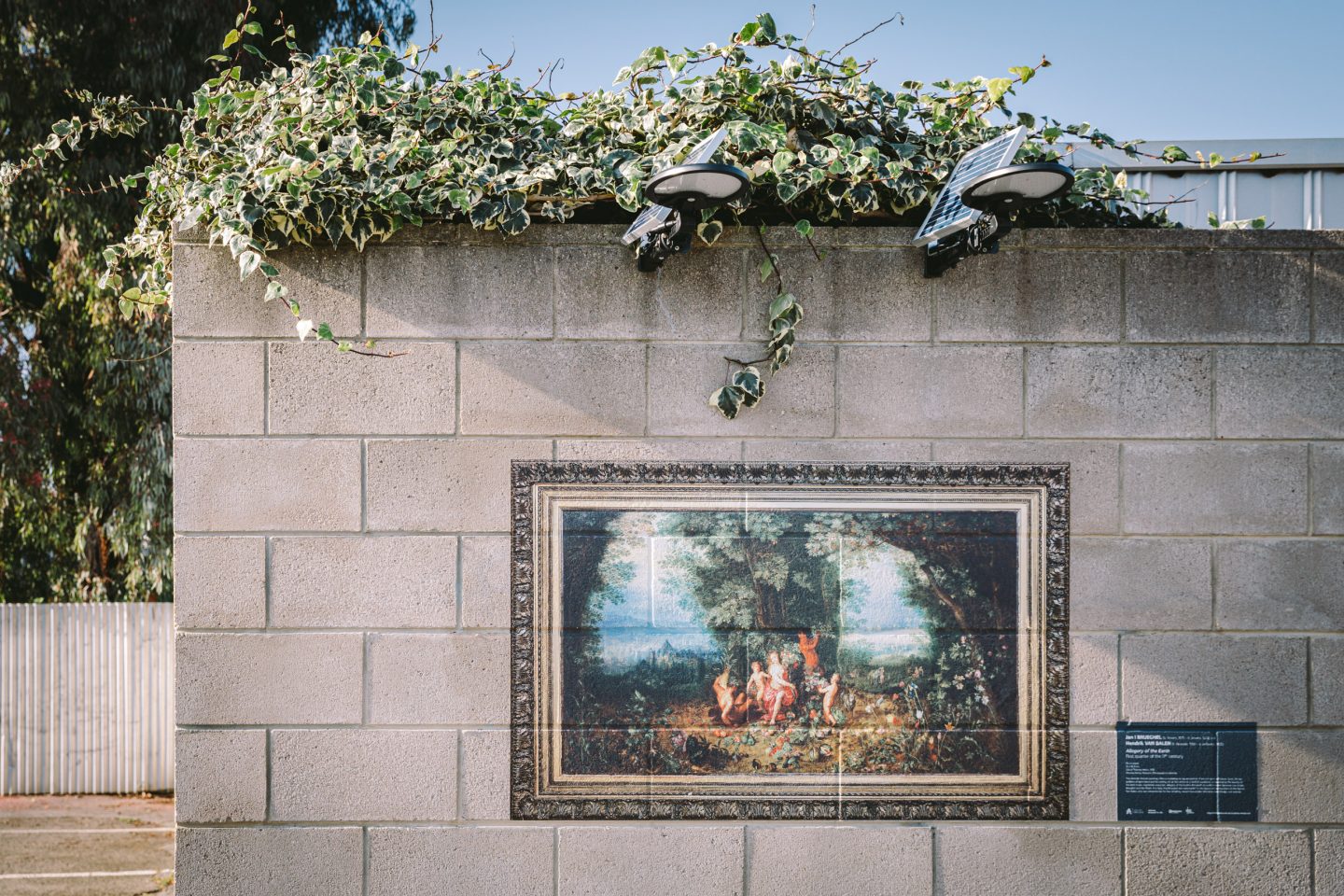
The predicament of the buildings is echoed by the siting of this reproduction inside an old smelting chimney niche. Contrast this with a print of a 17th century Jan Breughel I/Hendrik Van Balen collaboration Allegory of the Earth on a Besser block wall facing a car park. There is irony in the contrast between this exuberant celebration of the fruits of the earth and the cheerless character of the car park with its ‘Ticket Required – P’ prominently displayed.
The director of the David Roche Foundation Museum, Robert Reason, selected Simon Vouet’s Allegory of Peace for a wall site facing onto Melbourne Street. For Reason, the energetic activities of gods and goddesses in this work was an ideal match for similar cavorting to be found in the Roche collections. A 16th century boozy tavern scene is a natural for a wall of the Archer Hotel. And so on. Polly Dance, the project curator, describes the selection and siting process as “a real balancing act”.
“The curatorial themes that led the selection of both site and artworks were ‘community’ and ‘nature – so it was important for us to feature both. Likewise, artworks that displayed beautiful natural environments and people, or comments on humanity… This was a very interesting game of working out what artwork would be best for what site, and trying to find suitable walls for the dimensions of the pieces, as every piece is true to scale.”
Dance considers that from the perspective of the City of Adelaide’s Recover + Reimagine program, the Musée project has ticked the right boxes, particularly the one titled “create beautiful, surprising places”. Technically, the materials and methods used to get prints onto walls has worked well. There is consideration to extend the reach of this program into other sectors of the city.
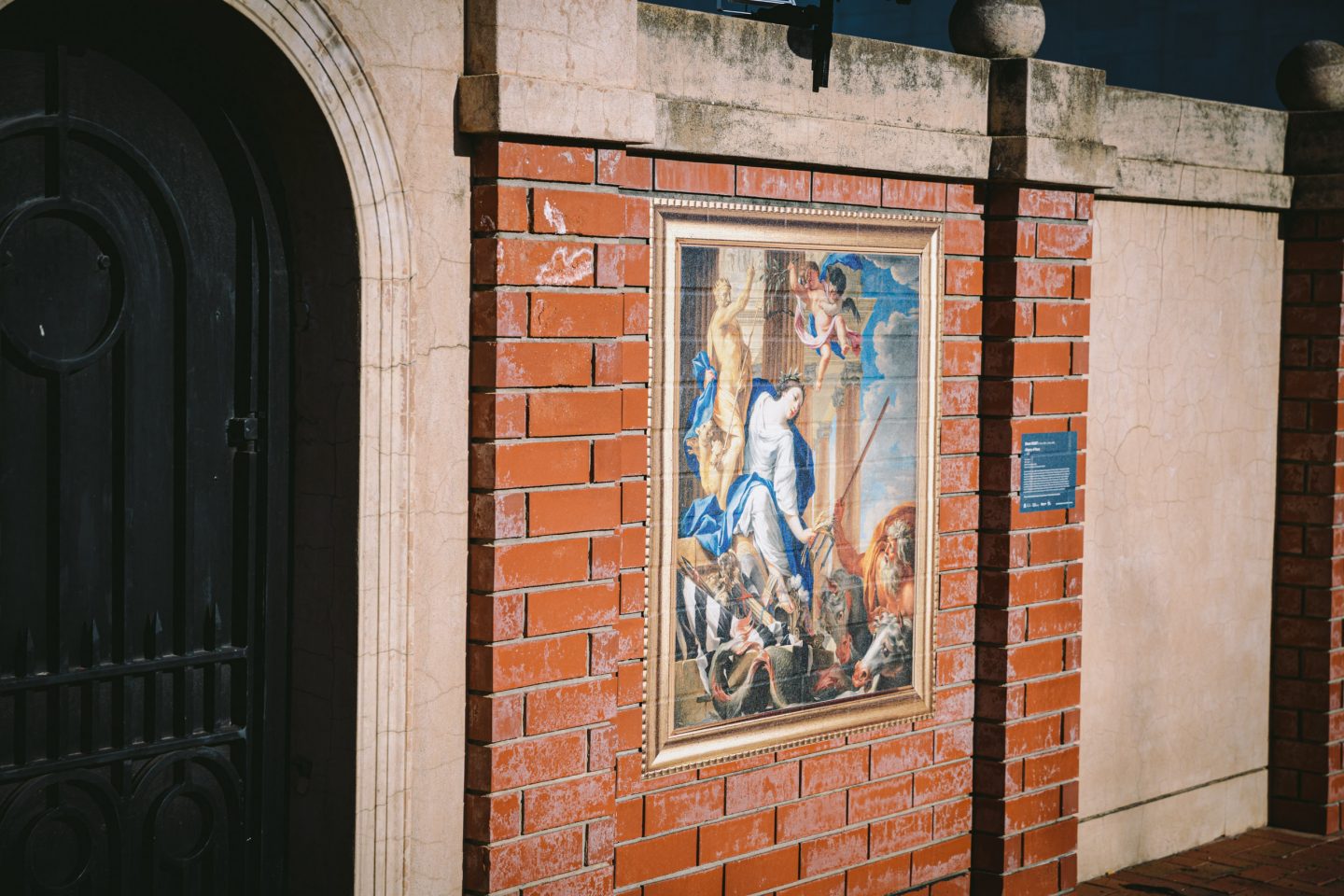
While this project has involved a lot of planning and production effort it is, essentially, a simple strategy. Reproductions of artworks in public spaces may lack the visual sexiness of son et lumière events. But there is something homely about reminding people of what they can expect to see if they wander into their local art gallery. Leaving images hanging around in all kinds of weather and for all manner of passing traffic adds to the informality. It is a different model to Peter Drew’s AUSSIE portrait series of street posters. But the ‘art on the streets’ menu is a long one. There are many well-known and less so works in the Art Gallery’s collection with the potential to recontextualise and refresh daily experience using the Musée strategy. And there are many creative souls in this town who would make inspired connections between images and sites.
Back to the sister city model. The China connection has been sustained since the 1980s and has paid dividends in terms of ongoing cultural exchange. The Cherbourg connection, right now, has momentum. A mural project, involving Adelaide artists Elizabeth Close and Jimmy C, referencing Pitjantjatjara and Yankunytjatjara culture, has happened in Cherbourg. The future of cultural exchange may not always be repros of old master paintings in heritage precincts – but it’s a promising start.
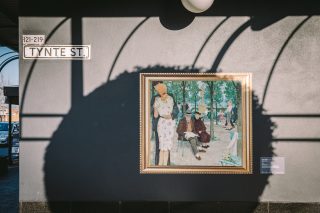

John Neylon is an award-winning art critic and the author of several books on South Australian artists including Hans Heysen: Into The Light (2004), Aldo Iacobelli: I love painting (2006), and Robert Hannaford: Natural Eye (2007).
